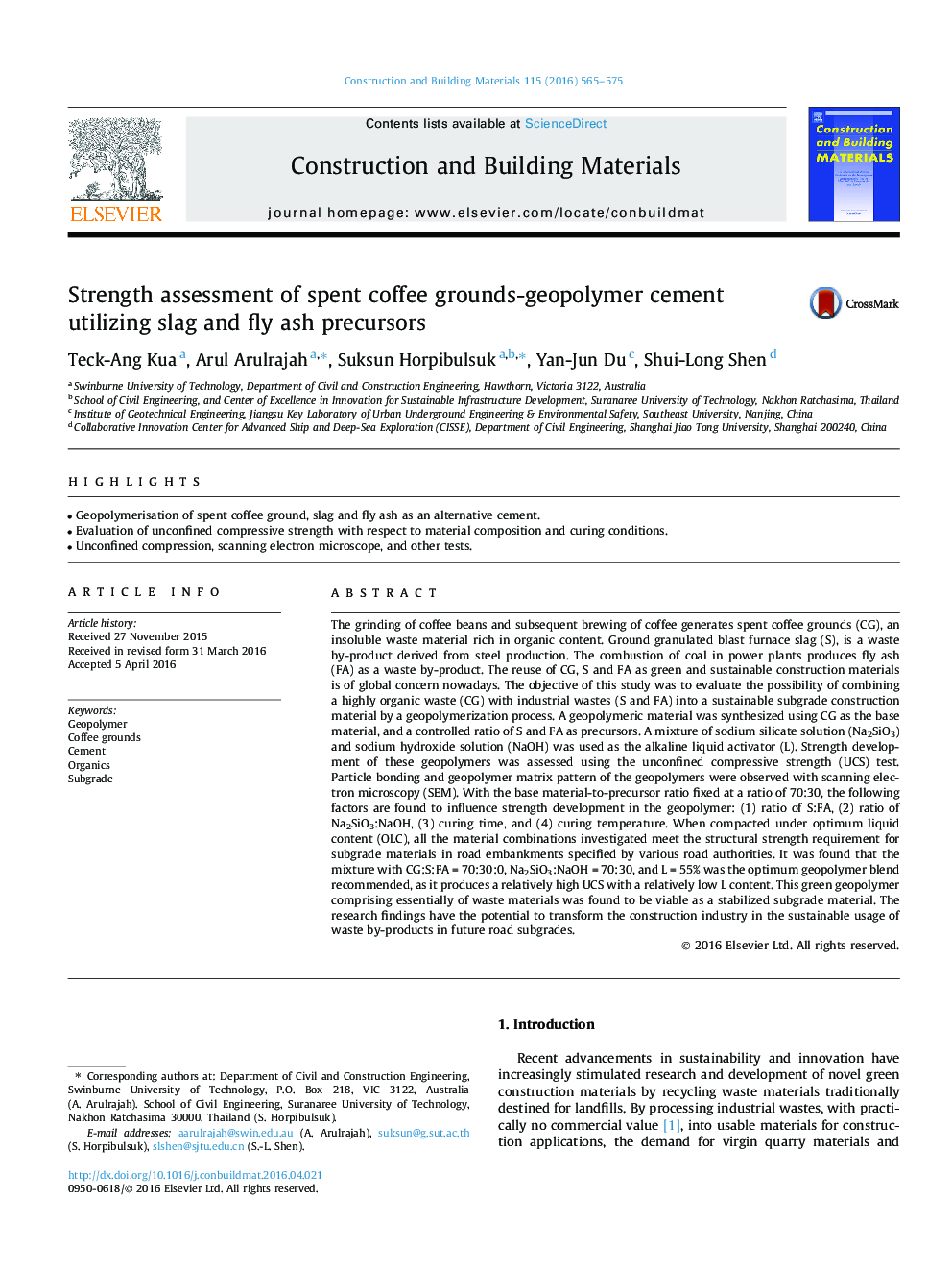| کد مقاله | کد نشریه | سال انتشار | مقاله انگلیسی | نسخه تمام متن |
|---|---|---|---|---|
| 6718957 | 503542 | 2016 | 11 صفحه PDF | دانلود رایگان |
عنوان انگلیسی مقاله ISI
Strength assessment of spent coffee grounds-geopolymer cement utilizing slag and fly ash precursors
ترجمه فارسی عنوان
ارزیابی قدرت قارچ های مصارف قهوه ای - سیمان ژئوپلیمر با استفاده از پیش ماده های خاکستر و سرباره
دانلود مقاله + سفارش ترجمه
دانلود مقاله ISI انگلیسی
رایگان برای ایرانیان
کلمات کلیدی
موضوعات مرتبط
مهندسی و علوم پایه
سایر رشته های مهندسی
مهندسی عمران و سازه
چکیده انگلیسی
The grinding of coffee beans and subsequent brewing of coffee generates spent coffee grounds (CG), an insoluble waste material rich in organic content. Ground granulated blast furnace slag (S), is a waste by-product derived from steel production. The combustion of coal in power plants produces fly ash (FA) as a waste by-product. The reuse of CG, S and FA as green and sustainable construction materials is of global concern nowadays. The objective of this study was to evaluate the possibility of combining a highly organic waste (CG) with industrial wastes (S and FA) into a sustainable subgrade construction material by a geopolymerization process. A geopolymeric material was synthesized using CG as the base material, and a controlled ratio of S and FA as precursors. A mixture of sodium silicate solution (Na2SiO3) and sodium hydroxide solution (NaOH) was used as the alkaline liquid activator (L). Strength development of these geopolymers was assessed using the unconfined compressive strength (UCS) test. Particle bonding and geopolymer matrix pattern of the geopolymers were observed with scanning electron microscopy (SEM). With the base material-to-precursor ratio fixed at a ratio of 70:30, the following factors are found to influence strength development in the geopolymer: (1) ratio of S:FA, (2) ratio of Na2SiO3:NaOH, (3) curing time, and (4) curing temperature. When compacted under optimum liquid content (OLC), all the material combinations investigated meet the structural strength requirement for subgrade materials in road embankments specified by various road authorities. It was found that the mixture with CG:S:FAÂ =Â 70:30:0, Na2SiO3:NaOHÂ =Â 70:30, and LÂ =Â 55% was the optimum geopolymer blend recommended, as it produces a relatively high UCS with a relatively low L content. This green geopolymer comprising essentially of waste materials was found to be viable as a stabilized subgrade material. The research findings have the potential to transform the construction industry in the sustainable usage of waste by-products in future road subgrades.
ناشر
Database: Elsevier - ScienceDirect (ساینس دایرکت)
Journal: Construction and Building Materials - Volume 115, 15 July 2016, Pages 565-575
Journal: Construction and Building Materials - Volume 115, 15 July 2016, Pages 565-575
نویسندگان
Teck-Ang Kua, Arul Arulrajah, Suksun Horpibulsuk, Yan-Jun Du, Shui-Long Shen,
